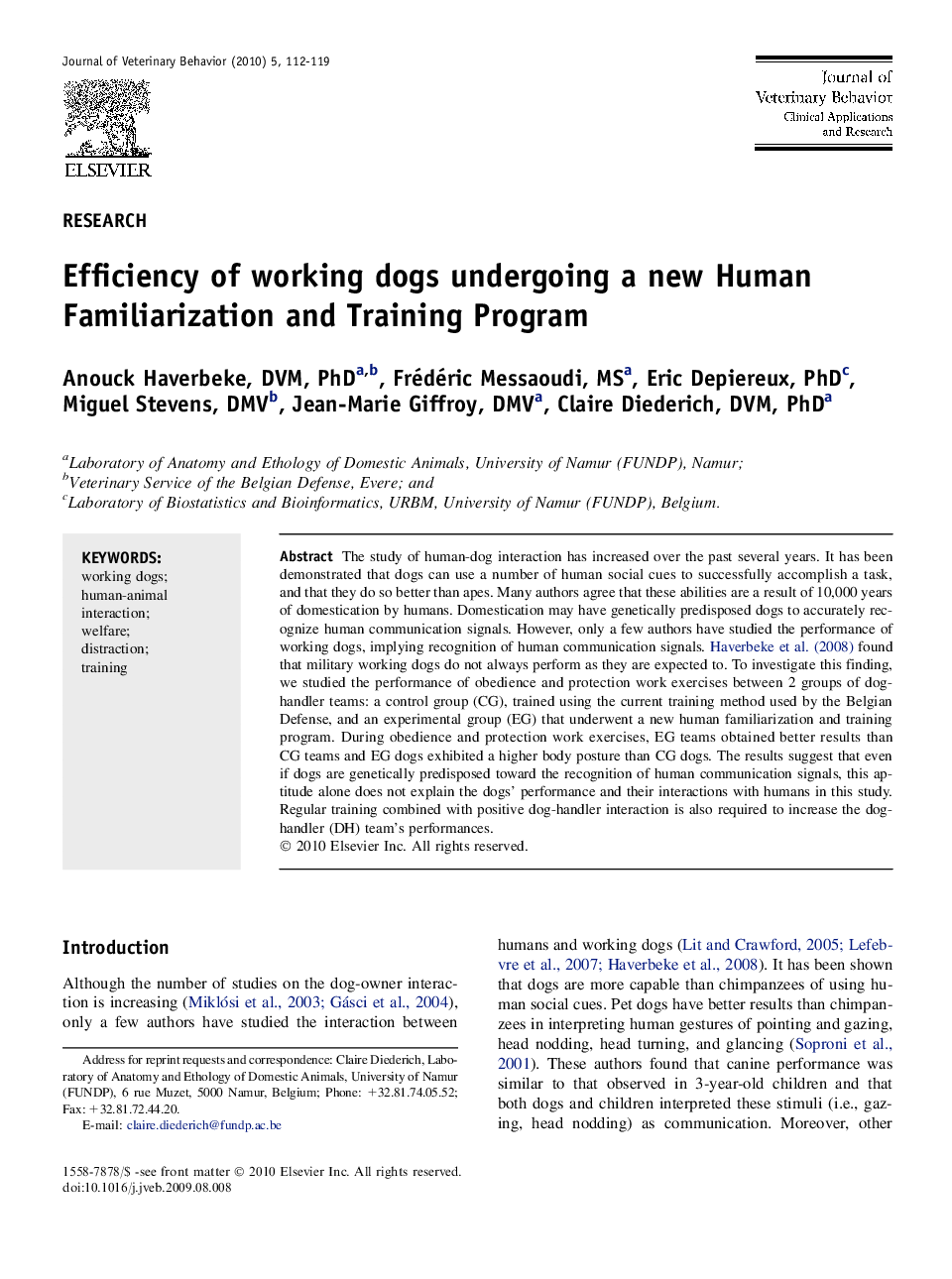| کد مقاله | کد نشریه | سال انتشار | مقاله انگلیسی | نسخه تمام متن |
|---|---|---|---|---|
| 2399509 | 1102043 | 2010 | 8 صفحه PDF | دانلود رایگان |

The study of human-dog interaction has increased over the past several years. It has been demonstrated that dogs can use a number of human social cues to successfully accomplish a task, and that they do so better than apes. Many authors agree that these abilities are a result of 10,000 years of domestication by humans. Domestication may have genetically predisposed dogs to accurately recognize human communication signals. However, only a few authors have studied the performance of working dogs, implying recognition of human communication signals. Haverbeke et al. (2008) found that military working dogs do not always perform as they are expected to. To investigate this finding, we studied the performance of obedience and protection work exercises between 2 groups of dog-handler teams: a control group (CG), trained using the current training method used by the Belgian Defense, and an experimental group (EG) that underwent a new human familiarization and training program. During obedience and protection work exercises, EG teams obtained better results than CG teams and EG dogs exhibited a higher body posture than CG dogs. The results suggest that even if dogs are genetically predisposed toward the recognition of human communication signals, this aptitude alone does not explain the dogs' performance and their interactions with humans in this study. Regular training combined with positive dog-handler interaction is also required to increase the dog-handler (DH) team's performances.
Journal: Journal of Veterinary Behavior: Clinical Applications and Research - Volume 5, Issue 2, March–April 2010, Pages 112–119